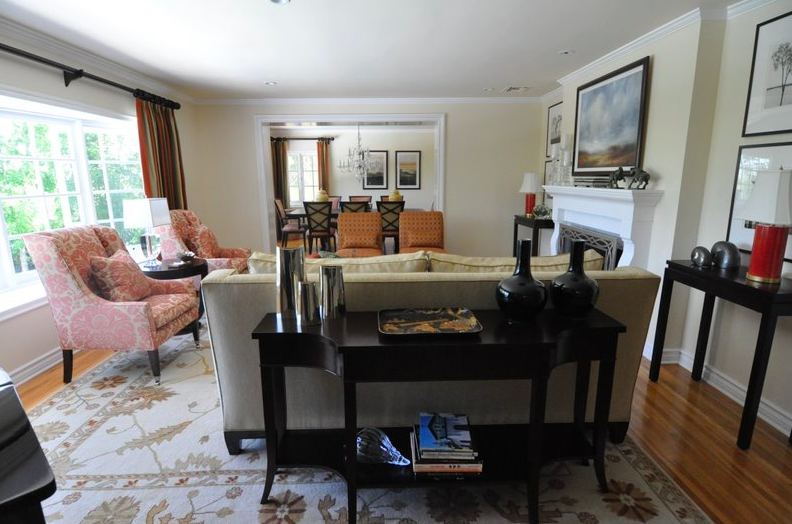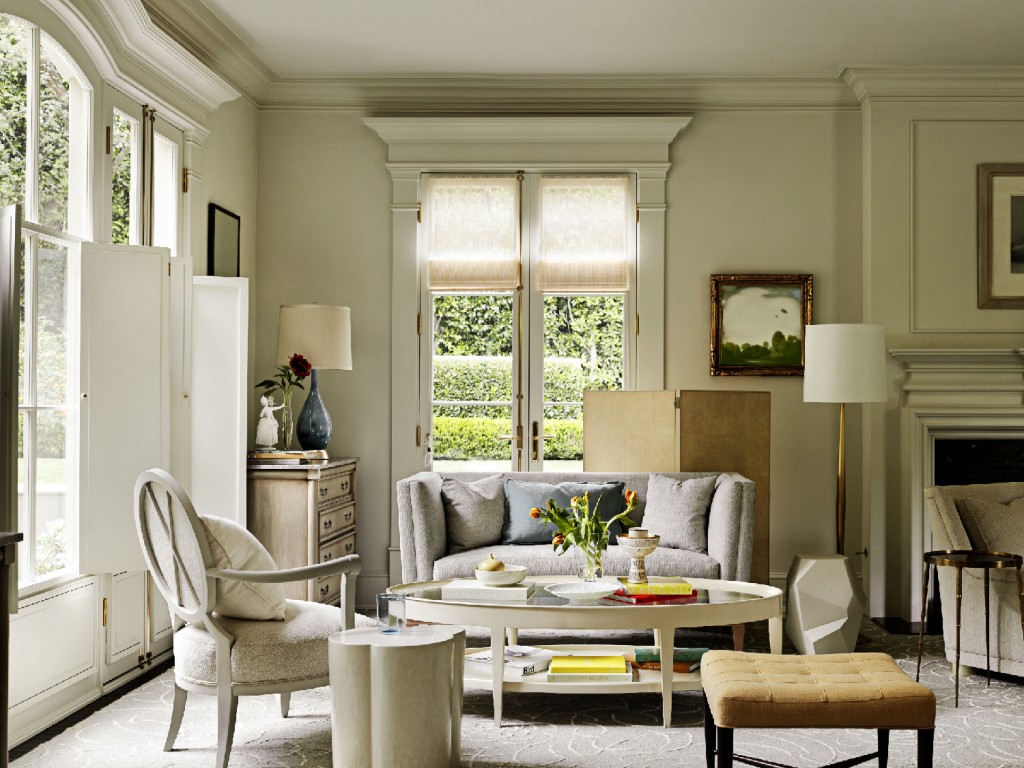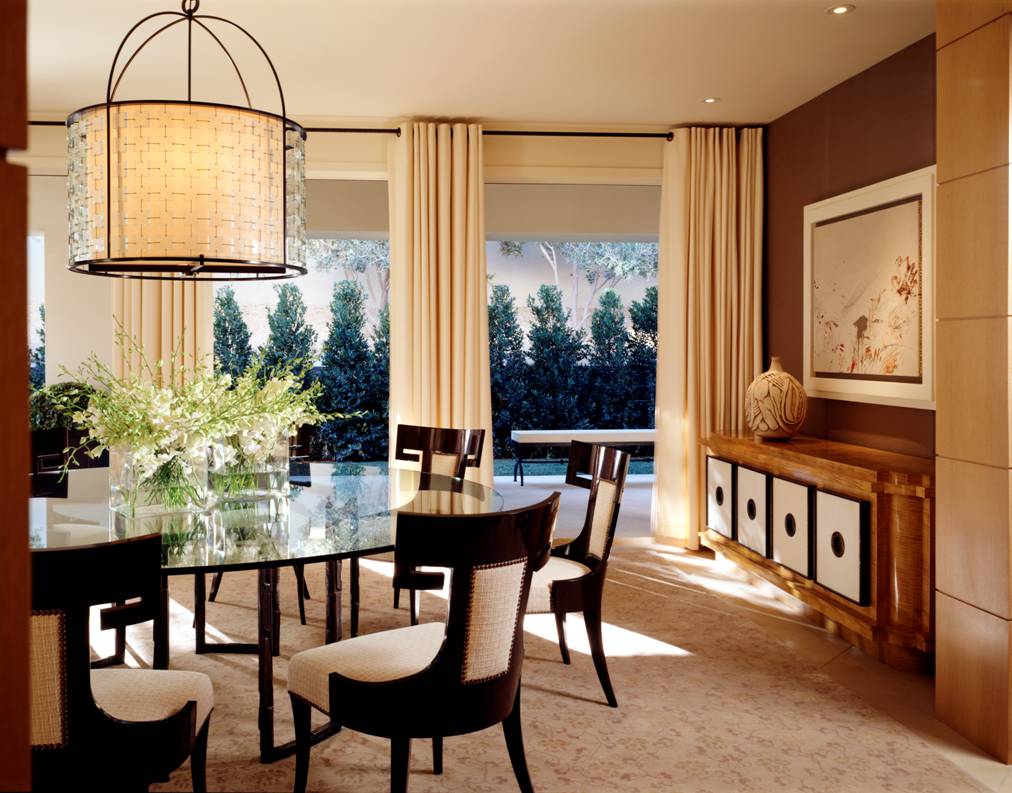Interior designers must pull inspiration from a variety of sources. A well-rounded designer will draw inspiration from classical as well as contemporary sources. Every space that a designer approaches requires a unique perspective; we cannot create cookie cutter designs which fit every design problem. We must draw from various creative sources to create spaces which delight and inspire. Our clients want a unique solution for their space, and we as designers must find ways to make each of our designs unique and luxurious.
This blending of classical and contemporary design can be described as “transitional design.” Transitional style in interior design and furniture design refers to a blend of traditional and contemporary styles, midway between old world traditional and the world of chrome and glass contemporary; incorporating lines that are less ornate than traditional designs, but not as severely basic as contemporary lines. As a result transitional furniture designs are classic, timeless, and clean.

Curves combine with straight lines in a transitional style interior to deliver a look that balances both masculine and feminine attributes for a comfortable and relaxing, uncomplicated design. A lack of ornamentation and decoration with minimal accessories keeps the focus on the simplicity and sophistication of the design. Color palettes are typically neutral and subtle and may be monochromatic, with color in art and accents, not upholstery and floors.
Unlike contemporary furniture, transitional style focuses on comfort and practicality to meet the lifestyle of an active household. The scales of furniture pieces are ample but not overwhelming. Goose feather and down fill is typically used for upholstered furniture, wood species (maple, mahogany, walnut, etc.) and wood finishing is typically warm tones but can range from a natural finish to a high-gloss lacquer. Texture is important, and a multitude of fabric selections can vary from durable materials to sophisticated, plush fabrics, with tone-on-tone or small scale graphics. A balanced mix of several textures is often used.

By incorporating classical and contemporary elements in a design, an interior designer can add elegance and timelessness to an interior project. This kind of design will delight clients for years to come; transitional style supersedes trends and fads. Transitional style can create a clean design which looks elegant and exclusive. By looking for classical and contemporary design elements, a designer can create a timeless space which exudes beauty for years to come.

According to Kerrie Kelly, with houzz.com, interior designers can balance old and new with a mix of simple lines, neutrals, warmth, and light. Kelly also says the following,
Transitional style is a marriage of traditional and modern furniture, finishes, materials and fabrics. The result is an elegant, enduring design that is both comfortable and classic. Whereas traditional and modern schemes may introduce a few opposing elements in their designs, transitional style strikes the perfect balance between the two. Through its simple lines, neutral color scheme, and use of light and warmth, transitional style joins the best of both the traditional and modern worlds.
Timeless design is a fixture in transitional style; by blending the classical with the modern, transitional designers are able to create spaces which endure the endless design fads and trends which inundate our modern times. With a transitional design, a client will not need to update their design every 6 months to keep up with ever changing trends; a transitional design will provide a wonderful space for a client to enjoy for years to come with minimal upkeep and design change. Transitional style also includes clean design and neutral colors which add to the beauty of an interior project. These timeless design elements create a holistic living environments which fosters tranquility and rest.
Interior designer, Nina Petronzio, explains the timelessness of transitional style in the following way:
We are dedicated to designing and manufacturing our furniture and selecting fabrics that will be timeless, yet incorporate the most up-to-date requirements for our high net worth clients and all of the elements necessary to give our hospitality clients a product that meshes well culturally and geographically with luxury, lifestyle and individuality of their discerning guests.
Transitional style can timeless and at the same time incorporate modern elements; this balance of classical and modern design creates a space which endures the test of time and yet is up to date with modern design trends. A transitional approach to interior design helps an interior designer create spaces which exude beauty, modernism, and tradition. Though this may seem like a contradiction, transitional style can supersede design industry fads and provide spaces which are exclusive, artistic, and elegant. When faced with a decision between modern and traditional, a designer can choose to take the path of balance. This balanced approach to design results with an end product of sophistication and beauty.

